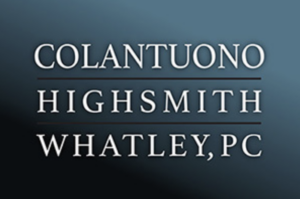 Amidst growing economic uncertainties, government budgets have tightened up. Unfortunately, funding for climate change mitigation and resiliency projects is often first on the chopping block. Yet with the increased need for funding climate-related projects, made more critical by the continued adverse effects on local governments and infrastructure from climate-related extreme weather events, managers need to find sustainable forms of financing to get them across the finish line. The Legislature’s recent passage of Senate Bill No. 852 is a new solution.
Amidst growing economic uncertainties, government budgets have tightened up. Unfortunately, funding for climate change mitigation and resiliency projects is often first on the chopping block. Yet with the increased need for funding climate-related projects, made more critical by the continued adverse effects on local governments and infrastructure from climate-related extreme weather events, managers need to find sustainable forms of financing to get them across the finish line. The Legislature’s recent passage of Senate Bill No. 852 is a new solution.
Signed into law on September 9, 2022, SB 852 allows cities and counties, alone or in collaboration with certain other local agencies, to form a Climate Resilient District (“CRD”) to raise and allocate funds for climate mitigation, adaptation and resilience projects. Eligible projects include those that address sea level rise, extreme temperatures, drought and wildfire risks.
Climate Resilience Districts build on existing law allowing the creation of Enhanced Infrastructure Financing Districts (EIFDs), which are similarly created, but more broadly intended to finance capital projects. Like EIFDs in 2014, CRDs are tax increment financing entities. Tax increment financing operates by freezing the property taxes for the participating entities, such as the creating city and participating special districts, and within the proposed district’s area at a base level. A part of property tax revenues in future years above the frozen baseline are then diverted to the CRD. Unlike the old redevelopment agencies, the new law only diverts tax increment revenues to the climate resilience district from the agencies who voluntarily create or join the climate resilience district.
CRDs have additional financing powers that cannot be pursued under the traditional EIFD structure. While the primary funding sources are based on tax increment financing, voter approved local sales taxes, and revenue generated from infrastructure projects, CRDs may also explore alternative sources including, but not limited to, benefit assessments, special taxes, property-related fees and the potential to receive funding from public and private entities.
Another key feature of CRDs is the ability to use funds to pay for or subsidize project operations and maintenance costs. EIFDs can only fund construction, installation, and certain maintenance costs, not ongoing operations costs. Therefore, SB 852’s expanded funding powers may help incentivize more entities to create CRDs compared to those who have already taken advantage of the 2014 legislation that enabled the creation of EIFDs.
As the state strives to meet its climate commitments, SB 852’s potential to establish Climate Resilient Districts will guarantee some degree of sustainable funding for communities that opt into creating one without feeling the strain of the state’s tightening wallet. While local, state and federal agencies brace for yet another economic downturn, options like CRDs exist to fund much-needed projects that reduce the risk and harm associated with climate change and its related effects on the state.
About Colantuono, Highsmith & Whatley, PC
Colantuono, Highsmith & Whatley represents California public agencies in municipal law, including revenues, land use, elections, employment, post-redevelopment, housing, public works, utility services, CEQA, LAFCO law, marijuana and related public safety topics and litigation. Our core commitment is to provide advice our clients find helpful, understandable, and fairly priced.
We are California’s leading experts on government revenues, including Propositions 13, 62, 218 and 26 and we have argued 18 revenue cases in the California Supreme Court since 2004. Our litigators have broad experience in public-sector litigation including appeals, elections, revenues, labor and employment, eminent domain and inverse condemnation.





